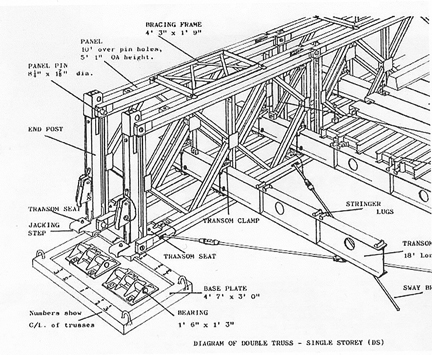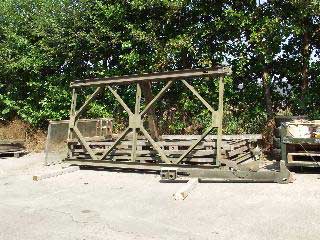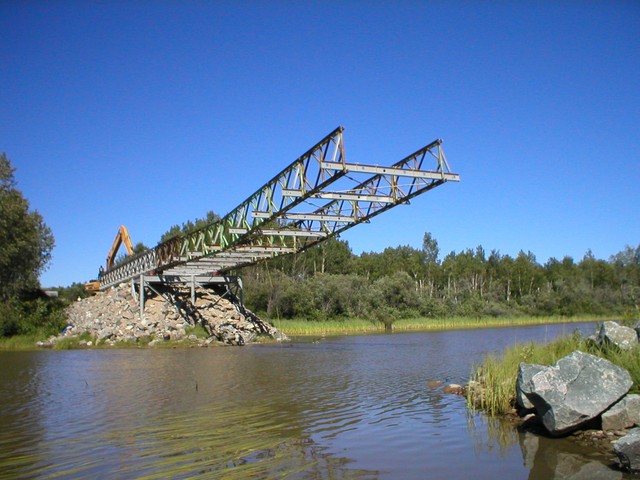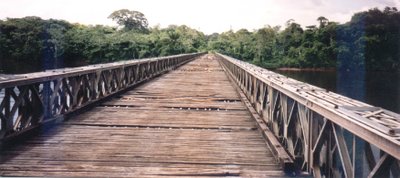
Bailey Bridges
Date: Friday, January 20 @ 20:30:34 UTC
Topic: Other
Bailey Bridges
When U.S. Combat Engineers arrived in England during World War Two, they were introduced to the Bailey Bridge System. The bridge components were invented in 1939 by Sir Donald Bailey, an obscure civil servant in the British War Office. As an engineering hobby, Bailey experimented with model bridges and their assembly. He hit upon the idea of using pre-engineered panels that could be combined in such a way to produce a 40 ton weight limit bridge (40 tons being the heaviest tank in the allied arsenal).
American Engineers, accustom to building with wood, at first ....
Bailey Bridges
American Engineers, accustom to building with wood, at first called the jumble of steel panels, braces and pins "scrap iron". As they began to learn the assembly techniques, they referred to the bridge components as a "man-sized Erector set". As troops practiced assembly, they became familiar with the simplicity of the components and understood how quickly a bridge could be assembled and placed. It was not unusual for Engineers to build and place a 60' Bailey bridge in less than 4 hours. By the end of the war, Eisenhower claimed the Bailey Bridge as one of the three pieces of equipment that most contributed to victory in Europe.
Once the length of the required bridge was determined, a chart showed engineers what combination of 5' x 10' panels were necessary to carry the required 40 ton load. A single panel bridge was known as a "single-single". Two panels pinned together side-by-side was a "double-single", and three panels side-by-side was a triple-single. Panels could also be pinned one on top of the other, to create a "single-double", a "double-double", or even a "triple-double".
 Panels were assembled into "bays", which were complete 10' bridge sections. Additional bays were pinned together until the required length was reached, then additional counter-balance sections were added and the complete bridge was "launched" on rollers across the gap. The individual components were light enough to be handled and assembled by engineer troops without the need of a crane. In most cases, the bridge was launched across the gap by engineer troops using only ropes and pulleys.

The amazing thing about the Bailey Bridge is the fact that while the bridge was designed to be only a temporary solution to span a gap, there are many bridges that were emplaced during the war that are still in use today. More amazing is the fact that the same Bailey Bridge design, with minor changes to allow for heavier loads, is still in use by Combat Engineers and civilian contractors around the world. Highway departments use Bailey Bridges to make emergency repairs to damaged bridges, while logging and mining companies use Baileys to span gaps on their temporary haul roads.

Bailey Bridge components are still manufactured today by Bailey Bridge, Inc. in Fort Payne, Alabama. Bailey Bridge, Inc. can supply new bridge parts, refurbished M2 bridge parts, complete bridge systems, and engineering and installation help.

|
|